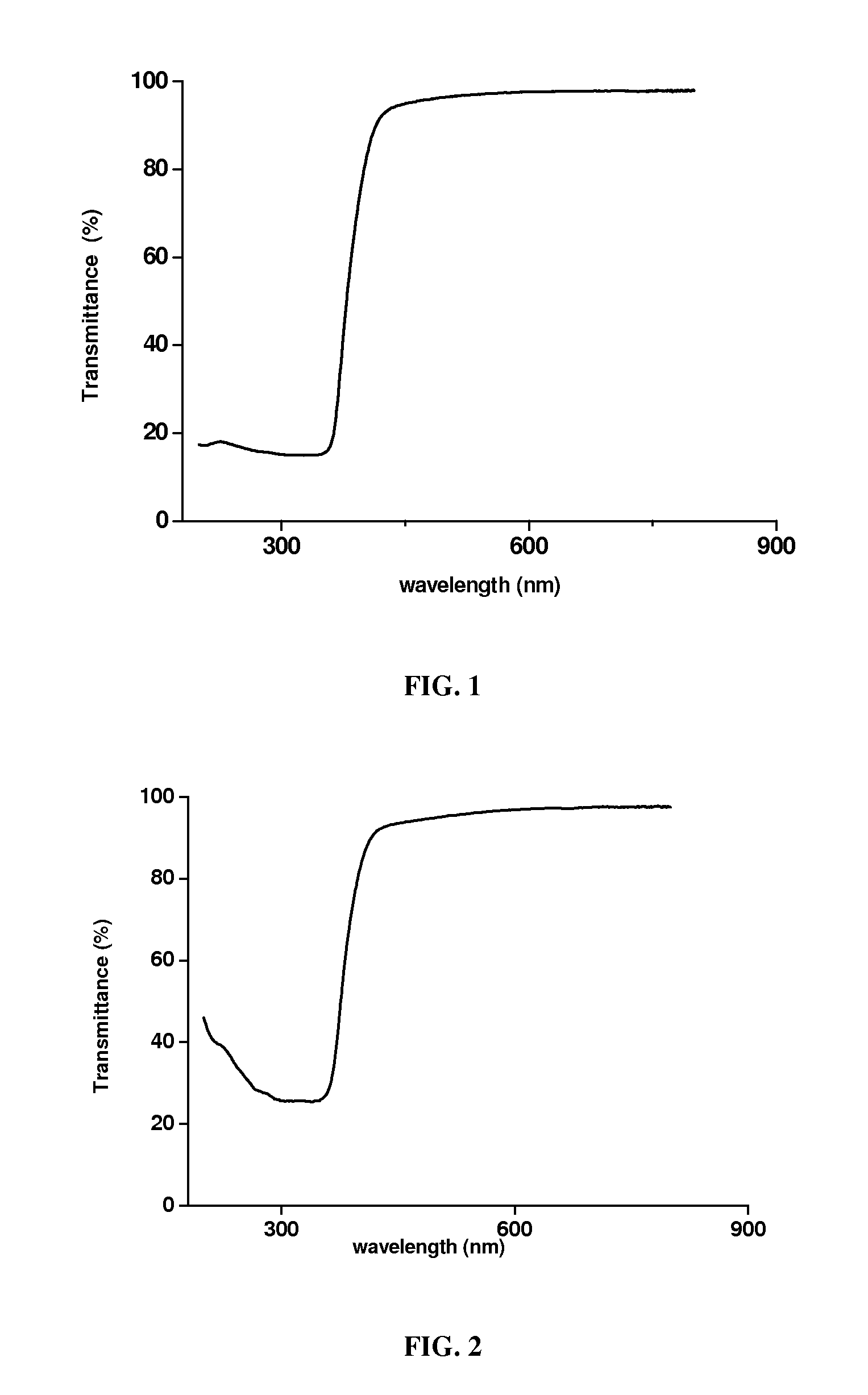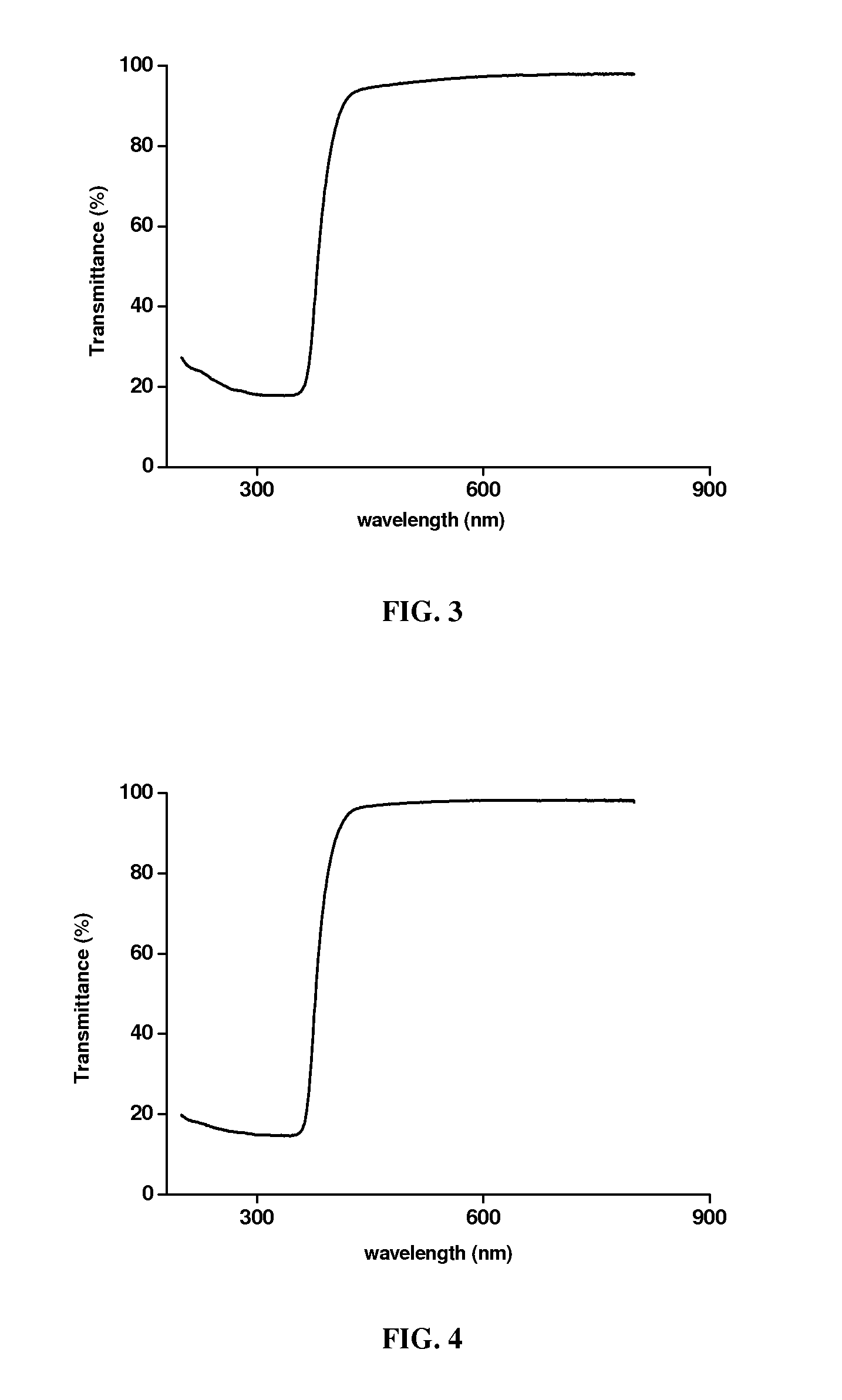Process for the preparation of nano zinc oxide particles
a technology of nano zinc oxide and nano particles, which is applied in the preparation of zinc compounds, chemical/physical processes, metal/metal-oxide/metal-hydroxide catalysts, etc., can solve the problems of significant deterrent, inability to produce free flowing nano zinc oxide particle powder, and inefficient process scalable in an efficient manner
- Summary
- Abstract
- Description
- Claims
- Application Information
AI Technical Summary
Benefits of technology
Problems solved by technology
Method used
Image
Examples
example 1
[0057]65.847 grams of Zn(OAc)2 was dissolved in 3 L of DMF to obtain the first solution. 12 grams of NaOH was dissolved in 1.5 L of ethanol, to obtain the alkali solution. 1.2 L of the alkali solution was slowly added to the first solution in order to synthesize nano zinc oxide particles. After the addition is complete, the reaction mixture is stirred for some more time. To this solution of nano zinc oxide particles 18 L of acetone was added in order to precipitate out the nano zinc oxide particles. The solution turned milky white on addition of acetone. This solution is then transferred to separating funnels so that particles settle down. Later on these settled particles are removed from the funnels. The excess solvent from the removed particles is decanted out and the remaining milky solution is centrifuged. The wet solid obtained is dried over phosphorus pentaoxide in vacuum desiccators.
example 2
[0058]54.87 grams of Zn(OAc)2 was dissolved in 2.5 L of DMF to obtain the first solution. 16 grams of NaOH was dissolved in 2 L of ethanol, to obtain the alkali solution. 1.875 L of the alkali solution was slowly added to the first solution in order to synthesize nano zinc oxide particles. After the addition is complete, the reaction mixture is stirred for some more time. To this solution of nano zinc oxide particles 17.5 L of acetone was added in order to precipitate out the nano zinc oxide particles. The solution turned milky white on addition of acetone. This solution is than transferred to separating funnels so that particles settle down. Later on these settled particles are removed from the funnels. The excess solvent from the removed particles is decanted out and the remaining milky solution is centrifuged. The wet solid obtained is dried over phosphorus pentaoxide in vacuum desiccators
example 3
[0059]54.87 grams of Zn(OAc)2 was dissolved in 2.5 L of DMF to obtain the first solution. 16 grams of NaOH was dissolved in 2 L of ethanol, to obtain the alkali solution. 1.875 L of the alkali solution was slowly added to the first solution in order to synthesize nano zinc oxide particles. After the addition is complete, the reaction mixture is stirred for some more time. To this solution of nano zinc oxide particles 6.56 L of acetone was added in order to precipitate out the nano zinc oxide particles. The solution turned milky white on addition of acetone. This solution is then transferred to separating funnels so that particles settle down. Later on these settled particles are removed from the funnels. The excess solvent from the removed particles is decanted out and the remaining milky solution is centrifuged. The wet solid obtained is dried over phosphorus pentaoxide in vacuum desiccators
PUM
| Property | Measurement | Unit |
|---|---|---|
| transmittance | aaaaa | aaaaa |
| transmittance | aaaaa | aaaaa |
| transmittance | aaaaa | aaaaa |
Abstract
Description
Claims
Application Information
 Login to View More
Login to View More - R&D
- Intellectual Property
- Life Sciences
- Materials
- Tech Scout
- Unparalleled Data Quality
- Higher Quality Content
- 60% Fewer Hallucinations
Browse by: Latest US Patents, China's latest patents, Technical Efficacy Thesaurus, Application Domain, Technology Topic, Popular Technical Reports.
© 2025 PatSnap. All rights reserved.Legal|Privacy policy|Modern Slavery Act Transparency Statement|Sitemap|About US| Contact US: help@patsnap.com



